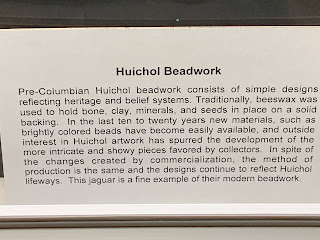El Paso was our first stop in Texas. Actually, we stayed in Anthony, Texas, at the Road Host RV Park. Is used to be the KOA.
There is a Camping World store right down the road, so, of course, we had to go shopping. We bought a new Winegard TV antenna. Getting that set up took some time. We also had a clothes hook in the back seat of our Chevy truck replaced. The clothing rod kept falling off!
Yesterday we visited the Centennial Museum and Gardens in town. We expected the gardens would be a good place to walk. That didn't turn out to be true. They were only the few gardens surrounding the museum building. We learned that the plants of the Chihuahua desert are quite similar to those in the Sonoran desert in Arizona.
The museum, however, was interesting. We both enjoyed the "Tiny Tunnels, Big Connections" exhibit about ants.
These are photos of any colonies. The top left shows ants building a nest in gel. Below that we see honey pot ants hanging upside down in their nest. The bottom right photos shows the queen ant on ant larvae.
Some birds are called ant followers. When large numbers of ants move from one place to another they can even be seen by birds flying above. Those birds are known as ant followers. They know that the insects fleeing from the marching ants are good food. So they follow the ants and get a meal. The scarlet tanager is one of those ant followers.
One section showed the geology of the area.
These children's sandals are made from turtle flippers by the Seri people who lived along the northeast coast of the Gulf of California.
This is a feather skirt, made of untanned pelican skins by the Seri Indians. They usually sewed together 6 hides for skirts for both men and women. This one was made about 1890.
We have all seen pictures or movies of early carts using cart wheels like this. They were used in Mexico and the southwestern United States in the early 20th century.
While walking around outside the museum we saw what looked like an oriental building. Why, here in El Paso?
We learned that the building was a gift to the people of the United States from the Kingdom of Bhutan. In 2008 it was entrusted to the University of Texas in El Paso.
I think this beaded cat is stunning. Read the description in the following photo.
I have heard stories about the Chinese laundries. These photos show items found in downtown El Paso. The Chinese were brought to the United States to work laying the Southern Pacific Railroad during the 1800s. In 1881, when the line was finished some of those workers settled in El Paso. The large bottles in the exhibit contained bluing used in the laundries. Numerous buttons were also found.

















That would be an interesting Museum to visit.
ReplyDeleteBe Safe and Enjoy your travels.
It's about time.